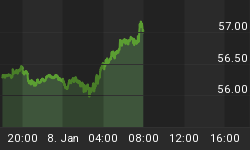The COVID-19 pandemic has taken its toll on India’s solar power program. According to a new report from ETEnergyWorld, India was able to add only about 989 megawatt (MW) of solar power capacity in the first quarter of 2020, compared with the expected 1,864 MW that was scheduled to be commissioned in that quarter.
The total installed capacity of solar energy was at 37,916 MW as of March 31, 2020, according to the report, “India Solar Compass Q1 2020,” by clean energy consultancy Bridge to India.
The report broke down the actual completion at 689 MW, comprising 19 projects split among: central government tenders of 257 MW, state government tenders of 415 MW and other projects of 18 MW capacity, all far below previous estimates in part due to COVID-19 related disruption.
On March 25, the Indian government imposed the first of its COVID-19 lockdowns. The report stated that even when project construction was allowed to commence from April 20, significant slippage in commissioning progress was likely the result of constraints related to equipment and labor availability.
Rooftop solar projects have been hit badly. Only 300 MW of estimated capacity were added in Q1 2020, according to the report.
Of the total utility scale added (32,176 MW), rooftop solar and off-grid solar capacity came in at 5,740 MW and 978 MW, respectively, while the total project pipeline stood at 28,972 MW as of March 31, 2020.
Power demand had begun to grow gradually in January and February before falling by as much as 25-30% towards the end of March as the lockdown took effect.
Related: How A Pandemic Made Americans Better Workers
A few days ago, Indian Prime Minister Narendra Modi called for every metro area in every Indian province to be powered entirely by rooftop solar power. He was addressing a meeting to review the work of the ministries of power and new and renewable energy.
But despite the slowdown in the execution of projects, tender issuance in Q1 was high with the Solar Energy Corporation of India Ltd (SECI) issuing 9,414 MW of tenders.
Total tender issuance and auctions during the quarter stood at 14,293 MW and 8,241 MW, respectively, the new report added.
Meanwhile, the International Renewable Energy Agency has said new solar and wind farms would cost less than many of the world’s coal-fired power plants, arguing governments should invest in them to boost economies amid the coronavirus outbreak, the Indian Express reported.
Francesco La Camera, director-general of the International Renewable Energy Agency (IREA), was quoted as saying renewables must be the backbone of national efforts to restart economies in the wake of the COVID-19 outbreak.
According to the IREA report, if the 500 GW of high-cost coal plants were replaced with solar and wind farms, it would reduce carbon emissions by about 1.8 gigatons — equivalent to 5% of CO2 emissions in 2019 — and save consumers billions of dollars.
By Sohrab Darabshaw via AG Metalminer
More Top Reads From Safehaven.com:

















